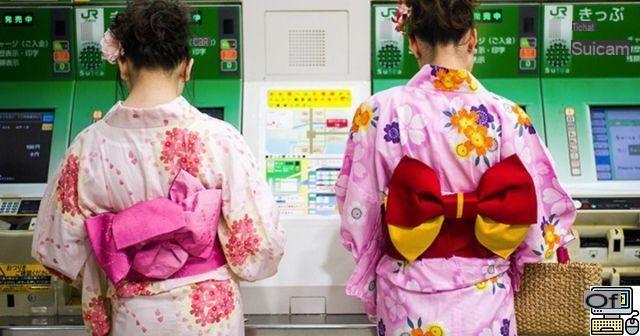 Comment (24)
Comment (24)
You accumulate an astronomical quantity of photos on your computer and, that's it, you finally decide to print your favorite images! Yes, but how do you get a good print? Explanations, in two stages.
Since the digital era, you don't really know/no longer know how to print photos: is my file of sufficient quality to print it in large format? What about the quality of photos from my smartphone? On which support will the photo be best highlighted? What are the choices for a beautiful finish? So many questions that we will answer in this file, divided into two parts. The first concerns the preparation of files before printing, while the second will offer an overview of paper types and finishing choices.
Quality of your image file
Before any printing, you must check that your image file offers sufficient quality for the print you want to make. And this involves three important parameters: definition, size and resolution. For this tutorial, we used Photoshop. Note that the CS2 version of Adobe's software is free.
Definition and size are the easiest concepts to understand, since they are the most familiar. The definition is the number of pixels (points) that your image has in height and width. The size we are talking about is that of the image to be printed, therefore its dimensions once on paper. Resolution is the ratio between definition and size. It corresponds, in photography, to a number of pixels per unit area, to a notion of pixel density. It is measured in dpi (dot per inch). Note that an inch is equal to 2,54 cm. These three characteristics interact in the preparation of your images.
"Resolution is the ratio between definition and size."
Resolution is therefore an important parameter in printing. It must ensure that a sufficient number of points of the original photo are available in a given area to avoid blurry or pixelated images. On your screen, your images are usually displayed at 72 dpi (useful resolution for the web). However, the ideal and optimal printing resolution is 300 dpi. This basic value guarantees correct image quality. It's sort of the universal printer resolution. You can of course use higher or lower resolutions, however it is advisable not to exceed a certain threshold for quality printing. Below, the pixels will appear too large and will be visible when printed.
"The ideal and optimal print resolution is 300 dpi."
On the left, an image at 72 dpi; on the right, the same image at 300 dpi
For two images of the same size, we see that the pixels that make up the 72 dpi file are much larger than those on the 300 dpi file, impacting the fineness of the details, and therefore the image quality.
Image size
Let's take a reference image right away to illustrate our point and now see the influence of resolution on image size. Of course, the starting information of your image varies depending on the device you use, its sensor and its definition when shooting.
Influence of resolution on image size.
When opened, the JPG displays a resolution of 240 dpi for an image size of 51,13 cm x 34,09 cm and a definition of 4831 x 3221 px. The first step is to generate a file with a resolution of 300 dpi to know its optimal size. To do this, and in order not to lose any pixel information, it is necessary to uncheck the resampling option (so as not to modify the definition of your image), then to enter the resolution 300 dpi.
Raw file resolution, definition and frame size.
The calculation made automatically by the software is as follows: (image definition / print resolution) x 2,54 cm = image size, i.e. (4831/300) x 2,54 = 40,9 cm and (3221/300) x 2,54 = 27,27cm.
You will then notice that the definition has not been modified. Also, the resolution affected the image size. At 300 dpi you will therefore be able to print this image optimally in the maximum format of 40,9 x 27,27 cm.
Image size for a resolution of 300 dpi without modification of definition.
Resampling
If you want to print an image in a larger format than recommended (while maintaining a resolution of 300 dpi), you can perform resampling. This resampling is therefore necessary when the size of the print reaches the limits of the definition of the sensor; hence the interest of photographing with a sensor of more than 20 Mpx to make large prints.
Resampling an image involves adding pixels to your image using an interpolation technique that creates new pixels using the average values of adjacent pixels. In fact, this addition of points absent from the initial photo causes the image to lose some sharpness. A photo that would normally be printed at 300 dpi on A4 size can be extended to A3 size by artificially doubling (resampling) the number of dots. We therefore understand this notion of loss of sharpness. Observing the print from a farther distance limits the effects of resampling.
Resampled image
In the example above, the following calculation was made: (image size/2,54) x resolution = definition. So (40/2,54) x 300 = 4724 px and (60/2,54) x 300 = 7086 px.
The same image, in 300 dpi resolution and resampled for a 40 x 60 cm format, now has more pixels (7087 x 4725 px).
"The greater the definition of your sensor, the more it will allow you to shoot large images."
Printing a photo from a smartphone
With increasingly large sensors, such as the latest Pansasonic Lumix CM1, the first photophone with a 1" sensor, the definition of files from smartphones is increasingly similar to those of cameras. However, it is not rare to doubt the final rendering of a print. For all those who are worried about whether the files coming from a smartphone are fine enough to be printed, we will simulate the manipulation of two images following the principle discussed in the previous part.
Optimal print size of Nokia Lumia 735 and iPhone 6
NokiaLumia735 – 6,7MP sensor.
iPhone 6 – 8 MP sensor.
In the end, if your sensor has a definition equivalent to that of a camera, the printing principles are the same and the parameters mentioned above will impact the printing quality in the same way. But good settings are not enough to ensure good quality, your smartphone does not have the same characteristics and components as your APN. The differences are often located at the level of the sensor, the optics, and the processor, which are generally less efficient on smartphones, even if we are seeing regular and considerable technological progress.
Finally, nothing is very complicated from the moment when one is interested in the information of his image. Those who do not want to waste time with all this technique can inquire directly with the printer. In some online stores, most of this information is unfortunately missing. And if you provide raw images, without modification of size and resolution, it is the provider who modifies the information of your file according to the calibration of his machines, for a result that does not always meet your expectations.
To be continued: what are the different media, finishes and possible alternatives for your prints?


























